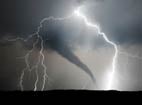Setting up disaster recovery that can be invoked remotely on demand has always been something of a challenge, mainly because it usually requires deploying physical or virtual appliances locally and then replicating data into the cloud. Zetta.net today announced the availability of a disaster recovery-as-a-service (DRaaS) offering that eliminates the need for that local appliance. The service is capable of backing up both virtual and physical servers.
Gary Sevounts, chief marketing officer for Zetta.net, says cloudDRaaS makes use of a custom implementation of the Web Distributed Authoring and Versioning (WebDAV) protocol to back up those servers in the cloud using parallel processes in a way that allows files to be backed up quickly. Once in the cloudDRaaS environment, they are stored on a virtual server that makes them accessible to any remote user.
Sevounts says the trouble with local appliances in the event of a disaster is that they might not be accessible when a building is flooded, for example. The cloudDRaaS service takes advantage of the core technology Zetta.net uses to provide backup and recovery services in the cloud and applies it within the context of a DRaaS service.
While larger organizations usually have the virtual server resources to deploy the infrastructure required to set up a disaster recovery plan that can be implemented in minutes, Sevounts says many IT organizations have not been able to access similar capabilities. In contrast, Sevounts says pricing for cloudDRaaS is based on the number of servers being backed up, a quarterly fee to test to recovery process, and the daily cost of keeping a live virtual server up during any actual period of downtime.
Just as importantly, Sevounts says the recovery process put in place by Zetta.net doesn’t require IT organizations to acquire new IP addresses to spin up virtual servers on cloudDRaaS. All of their IP addresses are simply transferred over.
Finally, Sevounts notes that while most organizations can replicate a virtual server into the cloud, some IT organizations are still running plenty of physical servers that existing DRaaS offerings don’t support.
Add it all up, and Sevounts says that Zetta.net is betting that many IT organizations are going to take a fair amount of comfort in having access to an approach to disaster recovery that is relatively simple to set up, and also makes for a recovery process that is less complex and costs less to invoke when needed.



